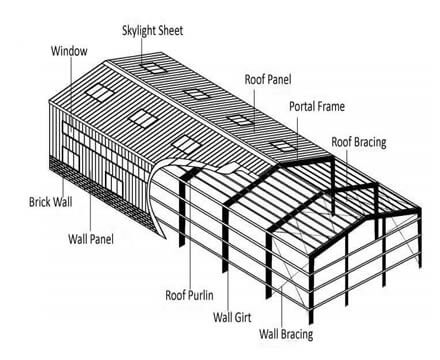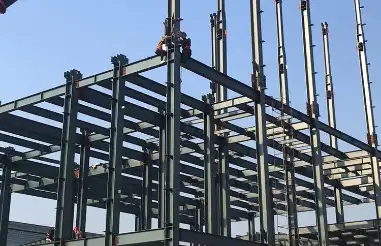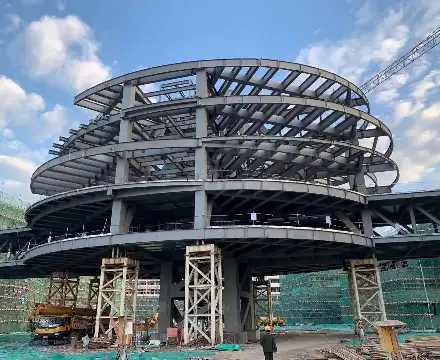Dapeng Town Industrial Park, Tongshan District, Xuzhou City, Jiangsu Province, China
According to the “Classification Standard for Seismic Fortification of Buildings” GB50223-2004, the common seismic fortification categories of Class A and B buildings are listed. In addition, the seismic fortification can basically be carried out according to the seismic fortification category of buildings of Category C. .
Buildings should be divided into four seismic fortification categories: Class A, Class B, Class C, and Class D according to the importance of their functions.
Class A buildings should be classified as major construction projects and buildings that may suffer serious disasters during an earthquake. Class B buildings should be buildings whose functions cannot be interrupted or need to be restored as soon as possible during an earthquake. Class C buildings should be classified as buildings except Class A, B, and D. Other buildings, Category D buildings should be classified as secondary earthquake-resistant buildings.
Category A buildings will have a huge social impact or cause huge economic losses after earthquake damage. Serious secondary disasters refer to floods, fires, explosions, massive leakage of highly toxic or highly corrosive substances and other serious secondary disasters that may occur after earthquake damage.
Category B buildings belong to earthquake damage that will cause great social impact or cause considerable economic losses, including important lifeline projects in cities and large multi-storey public buildings with dense crowds.
For Category D buildings, the earthquake damage will not affect Category A, B and C buildings, and the social impact and economic losses are minor. Generally, it is a single-storey warehouse with low value of stored items, few personnel activities, and no secondary disasters.

1.The seismic fortification category of medical buildings shall meet the following requirements:
The inpatient department, medical technology building, and outpatient department of the third-class special hospital should be classified as Class A for earthquake-resistant fortification.
Inpatient departments, medical technology buildings, and outpatient departments of tertiary hospitals in large and medium-sized cities, inpatient departments, medical technology buildings, and outpatient departments of secondary hospitals in counties and county-level cities, and inpatient departments of major township hospitals with seismic fortification intensity of 8 and 9 degrees , Medical technical buildings, important buildings of the command, communication and transportation system of emergency centers at or above the county level, and buildings of independent blood collection and blood supply institutions at or above the county level, the earthquake-resistant fortification category shall be classified as Category B.
For medical buildings of industrial and mining enterprises, the seismic fortification category can be determined by comparing with medical buildings in cities.
The level of the hospital, a tertiary hospital means that the total number of beds in the hospital is not less than 500 and the floor area of each bed is not less than 60m2; The tertiary special hospital is a very small number of tertiary hospitals that undertake particularly important medical tasks.
2.The fire-fighting garage and its duty room shall be classified as Class B for the seismic fortification category.
3. For major buildings in large and medium-sized cities and earthquake-resistant and disaster-prevention command centers at or above the county level with an earthquake-resistant fortification intensity of 8 or 9 degrees, the earthquake-resistant fortification category shall be classified as Category B.
The earthquake-resistant and disaster-prevention command system buildings of industrial and mining enterprises can determine their earthquake-resistant fortification categories in accordance with the urban earthquake-resistant and disaster-prevention command system buildings.
When a building has the function of a disaster prevention command center only in a certain section, the section can be classified as Category B.
4.The seismic fortification category of the building of the Center for Disease Control and Prevention shall meet the following requirements:
The building or its section of the Center for Disease Control and Prevention, which undertakes the tasks of research, pilot testing and storage of highly toxic and high-risk infectious disease viruses, shall be classified as Category A for earthquake-resistant fortification.
The main buildings of the disease prevention and control centers at or above the county level, except those specified in the preceding paragraph, shall be classified as Class B for earthquake-resistant fortifications.

Category A:
In scientific experimental buildings, buildings for research, pilot production and storage of highly toxic biological products, natural and artificial bacteria, and viruses (such as plague, cholera, typhoid, and emerging high-risk infectious diseases, etc.).
Category B:
① In sports buildings, stadiums and gymnasiums with super-grade, grade-A usage requirements and extra-large and large-scale grades.
Regarding the classification of usage requirements and scale, special grade refers to the home ground for hosting the Asian Games and Olympic-level World Championships; Grade A refers to venues for national and individual international competitions; large stadiums refer to the spectator seating capacity of not less than 40,000 people, large stadiums (including Swimming pool) refers to the audience seating capacity of not less than 6,000 people. Venues should meet the requirements of use level and scale at the same time.
2.Among the theater buildings, large-scale movie theaters, theaters, and entertainment center buildings.
Among them, large theaters and movie theaters refer to a hall with seats of not less than 1,200; large-scale entertainment centers refer to halls where the total number of seats on the upper and lower floors in a section is significantly greater than 1,200, and at least one of them has more than 500 seats (equivalent to the seating capacity of a medium-sized movie theater). .
3.In commercial buildings, large multi-storey shopping malls with dense crowds. When a commercial building is jointly built with other buildings, it shall be judged separately, and its seismic fortification category shall be determined by section.
Among them, large shopping malls refer to commercial buildings with a construction area of 25,000m2 or a business area of more than 10,000m2 in a section. If the average customer is 1.35m2, the flow of people can reach more than 7,500. Such commercial buildings generally need to meet the conditions of dense personnel, large-scale construction area or business area, and multi-storey buildings at the same time; all warehouse-type and single-storey large shopping malls are not included.
When a commercial building is jointly built with other buildings, including commercial and residential buildings or complex buildings, the division of the building shall be determined according to the principle of comparison. For example, a multi-storey commercial podium section or lower commercial section in a high-rise building may be Class B, while the upper residential may be Class C. Also note that when dividing by segment, if the upper segment is Class B, the lower segment should also be Class B.
For the densely populated securities trading floor, the seismic fortification category can be determined according to the principle of comparison.
4. Among museums and archives, large-scale museums, museums storing national first-class cultural relics, special-grade and first-grade archives.
Among them, large-scale museums refer to buildings larger than 10,000m2, which are generally used in museums directly under the central ministries and commissions and museums in provinces, autonomous regions, and municipalities directly under the Central Government. Special-grade archives are national-level archives, and Grade-A archives are archives of provinces, autonomous regions, and municipalities directly under the Central Government.
5. Among the exhibition buildings, large exhibition halls and exhibition centers.
In the above-mentioned exhibition halls and exhibition centers, the designed capacity of a section is generally more than 5,000 people. Science and technology museums may determine their earthquake-resistant fortification categories with reference to exhibition halls.
6.Among the educational buildings, low-rise teaching buildings of kindergartens and primary schools with a large number of people. When this type of house adopts a structure type with better seismic performance, seismic measures can still be taken according to the requirements of the seismic fortification intensity of the local area.
Among them, low-rise buildings refer to masonry houses with no more than three stories. Kindergartens with a large number of children refer to more than 200 children in a single building; primary schools with a large number of children refer to more than 600 children in a single building. If concrete structural materials with better seismic performance and a reasonable structure type are used, the seismic measures can still be adopted according to the original fortification intensity.
For the masonry houses used by people with weak self-rescue ability during earthquakes, such as nursing homes, welfare homes, schools for the disabled, etc., the earthquake-resistant fortification category can be improved correspondingly according to the above-mentioned kindergartens.
7.In high-rise buildings, when more than 10,000 people are often used in the structural unit, the seismic fortification category should be classified into Category B.
This kind of building is estimated based on the per capita area of 10m2, and the construction area is roughly more than 100,000m2. So many people in one structural unit belong to high-rise buildings, and its seismic measures generally require special research, that is, the degree of improvement is to increase the overall degree of earthquake resistance by one degree and increase the earthquake resistance by one degree. The grade still adopts stricter measures than Category C buildings in key parts, which can be determined by special research and demonstration.
Category C: Residences, dormitories and apartments.

Among warehouse buildings, warehouses that store radioactive substances and dangerous goods with fire hazards such as highly toxic, flammable, and explosive substances shall be classified as Class B buildings; those generally stored have low value, few personnel activities, and no secondary disasters. Single-storey warehouses can be divided into D-type buildings.
Except for the above-mentioned Class B buildings, warehouses are not all classified as Class D buildings, which need to be determined according to the nature and degree of influence of the stored items, and are stipulated in the industry standards by each industry.